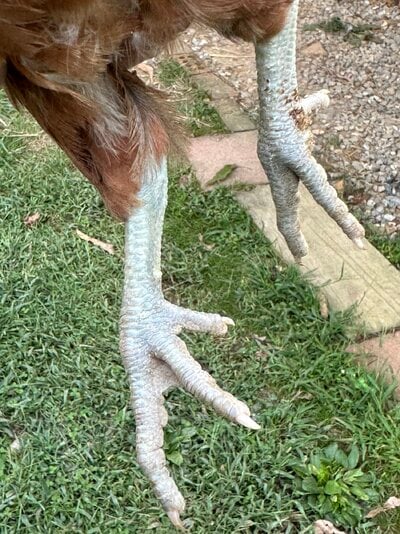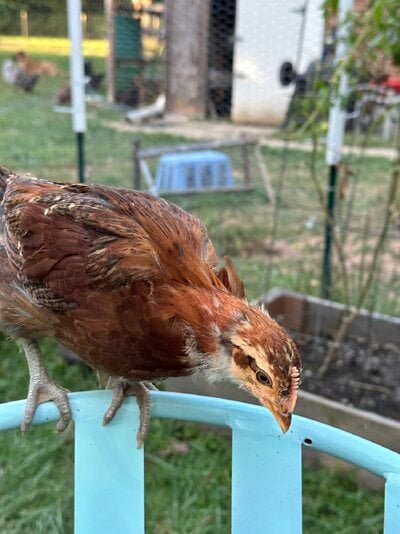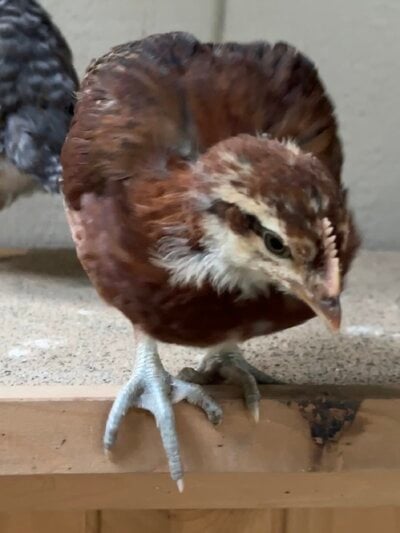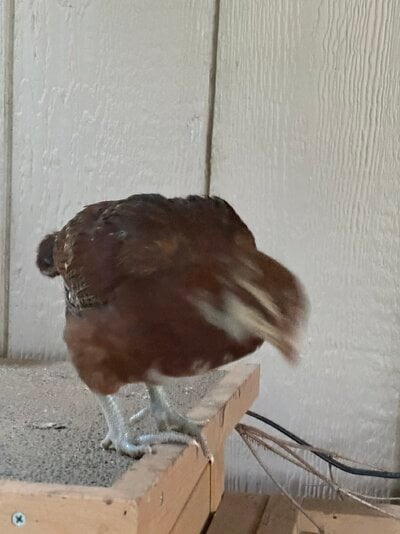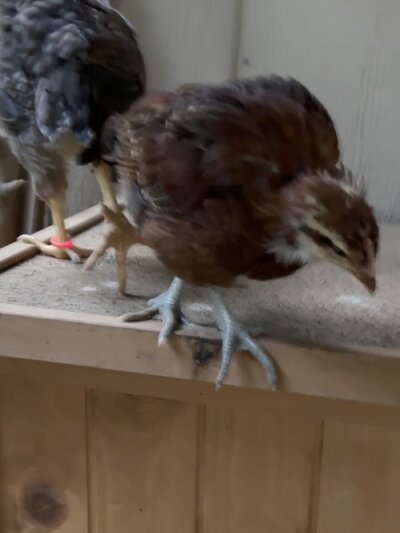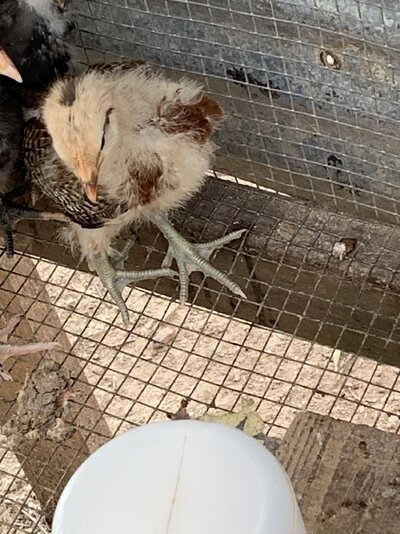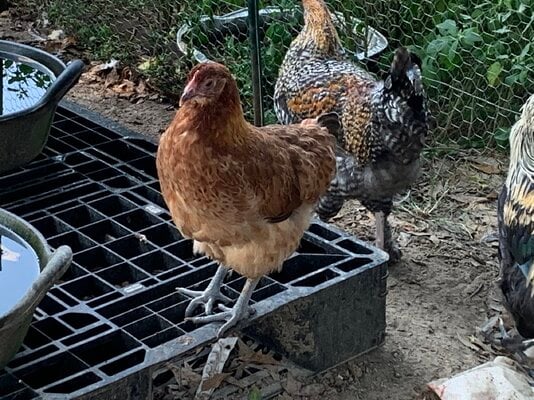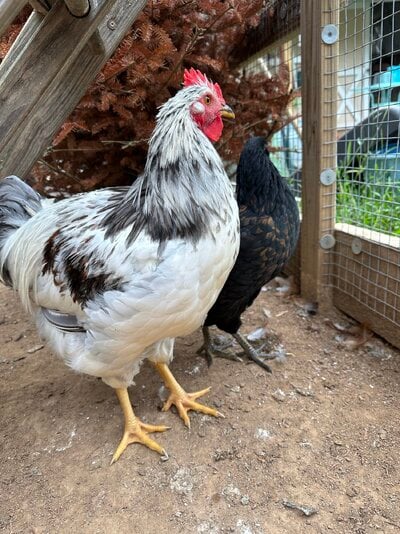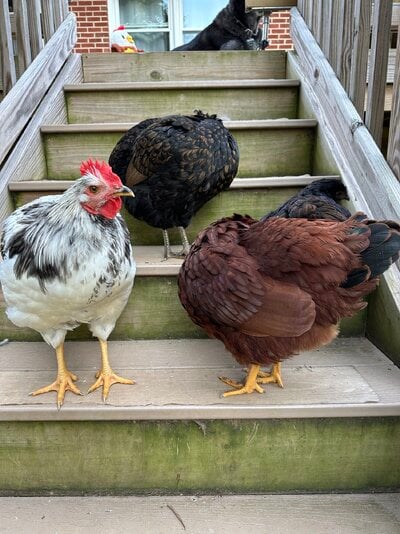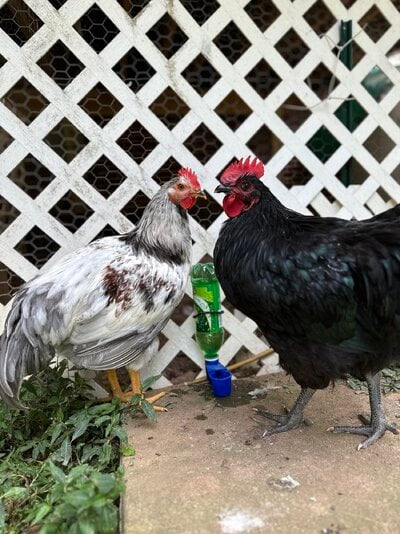Okay, let me preface this post by saying… I have posted here before about a black comb, about unexpected green legs, about lacing, about leakage, about unexpected feathered legs, and earlier today again about the mysterious black combs.
I do not post here because I’m lazy, but I find literally nothing else online about mix breed chicks and genetics amongst mix breeds.
So now… where do “blue” legs come from? I have chickens with black legs and slate colored legs. I even have a lavender Wyandotte with yellow legs that appear to have been lightly spray painted with metallic silver paint. but this chick is different.
Triscuit is still young- only 6 weeks, and maybe her leg color will change. But her legs are about as blue or blue-grey as they can get. But she’s feathering in as red.
I’ve hatched multiple chicks from this hen, and Triscuit is the only one whose legs have been this color.
Triscuit’s mom is a speckled Sussex with flesh tone legs. Triscuit’s dad is a mix- Charcoal. Charcoal’s dad was a Red Orpington w/ flesh-tone colored legs. Charcoal’s mom was a Rhode Island Blue w/ slate legs.
I’ve hatched at least 7 eggs from this hen. 4 were by the red Orp roo and feathered out red with flesh tone legs. 3 were fathered by charcoal and weren’t kept or aren’t old enough to know certainly but seem like they’re going to feather out red and 2/3 have flesh tone legs. Only triscuit has blue legs. They are pronounced because they are on a red chick, I think. But none of my blue or lavender chickens have legs like this. Is this color typical?
I do not post here because I’m lazy, but I find literally nothing else online about mix breed chicks and genetics amongst mix breeds.
So now… where do “blue” legs come from? I have chickens with black legs and slate colored legs. I even have a lavender Wyandotte with yellow legs that appear to have been lightly spray painted with metallic silver paint. but this chick is different.
Triscuit is still young- only 6 weeks, and maybe her leg color will change. But her legs are about as blue or blue-grey as they can get. But she’s feathering in as red.
I’ve hatched multiple chicks from this hen, and Triscuit is the only one whose legs have been this color.
Triscuit’s mom is a speckled Sussex with flesh tone legs. Triscuit’s dad is a mix- Charcoal. Charcoal’s dad was a Red Orpington w/ flesh-tone colored legs. Charcoal’s mom was a Rhode Island Blue w/ slate legs.
I’ve hatched at least 7 eggs from this hen. 4 were by the red Orp roo and feathered out red with flesh tone legs. 3 were fathered by charcoal and weren’t kept or aren’t old enough to know certainly but seem like they’re going to feather out red and 2/3 have flesh tone legs. Only triscuit has blue legs. They are pronounced because they are on a red chick, I think. But none of my blue or lavender chickens have legs like this. Is this color typical?

